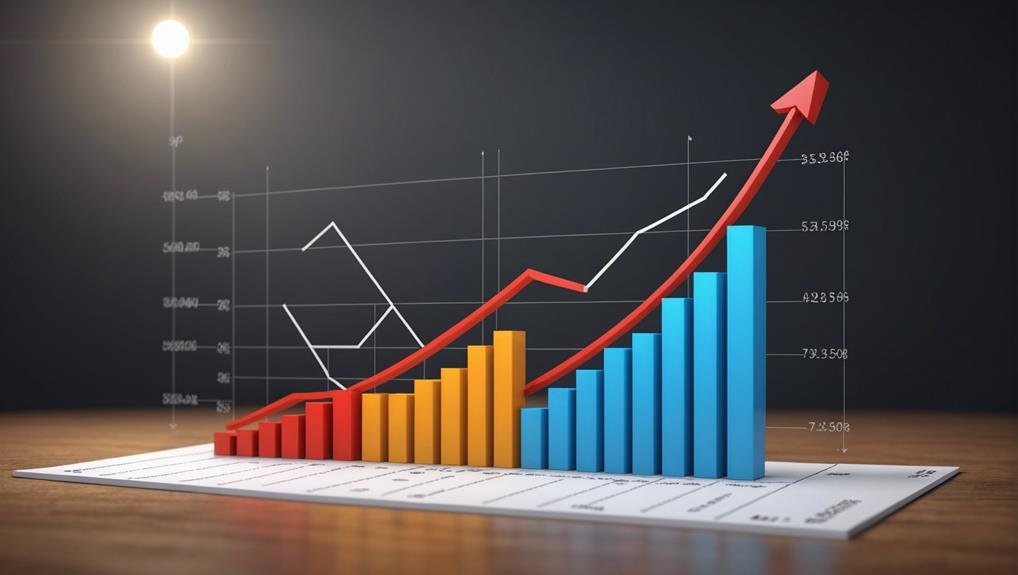Demand: How It Works Plus Economic Determinants and the Demand Curve
Understanding demand dynamics is vital for businesses as it affects consumer behavior and economic fluctuations. Demand determinants such as product price, income, substitutes' prices, and preferences shape market trends. The law of demand illustrates the inverse relationship between price and quantity demanded. Analysis of the demand curve visually represents consumer response to price changes. Leveraging demand through strategic pricing strategies is essential for sustained business success and profitability. By grasping these concepts, businesses can capitalize on opportunities, anticipate consumer needs, and adapt effectively. Further insights await into how demand intricacies impact market strategies and profitability.
Key Takeaways
- Demand is influenced by factors like price, income, substitutes, preferences, and price change expectations.
- Law of demand illustrates the inverse relationship between price and quantity demanded.
- Understanding demand dynamics aids in setting effective pricing strategies.
- Demand curve analysis visually represents consumer response to price changes.
- Leveraging demand involves forecasting, adapting to trends, and aligning pricing with consumer behavior.
Understanding Demand Dynamics
In exploring the intricacies of market forces, an in-depth comprehension of demand dynamics is essential for businesses seeking to navigate the complexities of consumer behavior and economic fluctuations. Demand fluctuations and market trends play a pivotal role in shaping consumer preferences and influencing purchasing decisions.
Understanding consumer behavior is paramount in devising effective pricing strategies that resonate with target markets. Businesses must adapt to changing demand patterns to remain competitive and sustain growth. By analyzing consumer behavior and staying attuned to market trends, companies can optimize their pricing strategies to meet consumer needs and maximize profitability.
Keeping a pulse on demand dynamics allows businesses to proactively respond to shifts in consumer preferences and market conditions, ensuring long-term success in an ever-evolving marketplace.
Exploring Demand Determinants
Investigating the factors that drive consumer demand reveals a plethora of determinants shaping market dynamics and influencing purchase behavior. Factors influencing demand encompass a wide range, including product/service price, buyer's income, prices of substitutes, consumer preferences, and expectations of price change.
These determinants play a critical role in shaping consumer behavior and market trends. Changes in these factors can lead to significant fluctuations in demand, impacting businesses and the overall economy. Understanding these determinants is essential for businesses to develop effective strategies, manage inventory efficiently, and adapt to evolving consumer preferences.
Unveiling the Law of Demand
Revealing the Law of Demand sheds light on the fundamental principles governing consumer behavior in response to price variations.
- Price elasticity measures the sensitivity of demand to price changes.
- Consumer behavior analysis explores how individuals make purchasing decisions.
- The law of demand showcases the inverse relationship between price and quantity demanded.
- Changes in consumer preferences and income can alter demand patterns.
- Understanding demand dynamics helps businesses in setting best pricing strategies.
Analyzing the Demand Curve
The analysis of the demand curve provides a vital visual representation of consumer behavior in response to price fluctuations. Demand elasticity analysis offers insights into how sensitive consumers are to price changes, influencing their purchasing decisions. Understanding price elasticity implications helps businesses strategize pricing to maximize profits and market share.
Leveraging Demand for Business Success
Strategically harnessing consumer demand is paramount for businesses seeking sustained success and profitability in today's dynamic market landscape. Leveraging demand for business success involves understanding consumer behavior and market trends to capitalize on opportunities effectively.
Key strategies include:
- Utilizing demand forecasting to anticipate consumer needs and preferences.
- Analyzing consumer behavior to tailor products and services accordingly.
- Maintaining demand-supply equilibrium to prevent shortages or surpluses.
- Adapting to evolving market trends to stay competitive.
- Implementing pricing strategies that align with demand dynamics.
Conclusion
To sum up, demand plays a vital role in economics, shaping market dynamics and influencing consumer behavior.
One interesting statistic to note is that according to a study by the Bureau of Economic Analysis, consumer spending, driven by demand, accounts for approximately 70% of the United States' GDP.
Understanding the determinants of demand, the law of demand, and the demand curve is essential for businesses and policymakers to make informed decisions and achieve market equilibrium.







